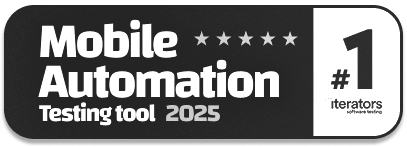Is Your Development Team Leaving Your QA Team in the Dust?
|
|
Artificial Intelligence is no longer a futuristic idea in software development. It’s here in code editors, CI/CD pipelines, test generation services, and release systems. Companies like GitHub Copilot, Amazon CodeWhisperer, and Tabnine are enabling developers to code 10 times faster than ever before. AI assistance allows writing code that would have taken hours with the typical approach to be scaffolded in a few minutes.
But what about QA?
In fact, the majority of QA teams are still stuck in manual scripting, legacy automation frameworks, and reactive test cycles. When dev teams zoom ahead with AI behind the wheel, QA teams are still stuck in the slow lane of test design, fragile locators, and siloed tooling. The gap in velocity is expanding, and AI is at the center of it.
How AI Has Transformed Development
The AI-powered acceleration thus far allowed development teams to deliver features in far reduced timeframes. However, this exponential increase in speed has not been mirrored in Quality Assurance processes, creating a growing imbalance. Let’s understand the major AI-driven changes and why they matter.
Code Generation with Copilots
AI-driven coding assistants, such as GitHub Copilot, Amazon CodeWhisperer, and Tabnine, operate like auto-complete on steroids. They’ve transformed the way developers think about coding tasks. These tools can scaffold CRUD operations in seconds, auto-generate boilerplate code, refactor complex logic with AI guidance and even write tests directly from function descriptions. As a result, the entire development cycle is compressed. Features progress quickly from concept to deployment . The catch? Conventional QA operations, such as writing manual test cases, reviewing requirements, and running regression, don’t scale unless they’re also powered by AI.
Smart Suggestions in IDEs
Development environments (IDEs) like VS Code, IntelliJ, and PyCharm now have AI tools baked into them and act as co-developers. These tools can also autocomplete complex logic, identify bugs as they happen, recommend performance and code quality improvements, and transform pseudocode into working code. This means developers write code, but they’re not only writing code– they’re iterating, testing, and debugging in real-time. This removes conventional lags between writing code and finding bugs, creating an instant feedback loop.
AI in Code Reviews
AI-powered code review tools (such as DeepCode, Codacy, SonarQube, or CodeGuru) now use higher-level reasoning when reviewing pull requests. These tools can find security vulnerabilities, identify code smells, enforce standards, and catch potentially unsafe or untested changes before they go into code. Until then, QA engineers, or seasoned developers, had been responsible for making sure code met standards, a labor-intensive, manual process. Now, much of that responsibility is assumed by AI. Some QA deliverables are shifting left into the development phase, and that streamlines the process of getting to production.
Continuous Integration with AI Intelligence
CI/CD platforms (such as GitHub Actions, GitLab, CircleCI, Jenkins X, Harness, and Spinnaker) are becoming infused with AI to automate decisions that would have required manual configuration or firefighting after deployment. Such intelligent systems can foresee the risks of build failure, recommend test optimization techniques, provide real-time monitoring and deployment health, and roll back unstable builds automatically. So, the deployment pipeline is one click away and intelligent, not only automated. Releases happen more often and faster. However, QA processes such as test case validation, regression analysis, and exploratory testing now look slow by comparison.
Where QA is Falling Behind – The AI Gap
The speed of AI-powered development is beginning to outpace the slower, manual processes many QA teams still employ. As development workflows are accelerated by technologies such as GitHub Copilot, smart IDEs, and intelligent CI/CD pipelines, QA becomes increasingly out of sync due to four challenges.
- Manual Test Case Creation in an AI World: Even as developers write actual code with the assistance of AI copilots, QA teams are still often trapped manually writing their test cases in Gherkin or spreadsheets, scripting out tests line-by-line using brittle selectors, and creating hours of test data manually. This is slow, error-prone, and increasingly at odds with the speed and fluidity of modern, AI-driven development cycles.
- Reactive Testing Instead of Predictive QA: AI provides developers with real-time intelligence and alerts as they’re coding, but QA often sits on the sidelines until after the builds are done to test and investigate bugs. This reactive model makes QA a bottleneck rather than a proactive partner in quality.
- No AI in Test Maintenance: With the help of AI-assisted refactoring, codebases evolve rapidly, but traditional automation is unable to keep pace and breaks when locators change or UIs move around. Test suites are brittle and inefficient because of manual updates, high flakiness, and long feedback loops.
- AI Observability is Missing in QA: While DevOps teams have AI tools such as Datadog and New Relic to monitor the real-time behavior of production, QA teams lack that visibility. QA efforts are misguided and can overlook the most critical areas to test without data on actual user interactions and risks.
AI’s Impact on the QA-Dev Dynamic
Let’s break down how AI has shifted the balance of power between dev and QA.
| Area | Dev with AI | QA Without AI |
|---|---|---|
| Code generation | Copilot writes in real-time | Manual test case creation |
| Test writing | Auto-generated unit tests | Manual functional test scripting |
| Code review | AI flags logic/security flaws | QA finds defects post-deployment |
| Code changes | Refactored in seconds | Fragile tests break |
| Release pipelines | AI detects failure patterns | QA lacks predictive testing |
| Feedback loops | Instant from IDE | Delayed from test reports |
Conclusion: Without AI, QA cannot operate at the same speed, scale, or intelligence level as AI-augmented development.
Closing the AI Gap in QA
The introduction of AI in development workflows is not the issue. The problem is that QA has not been enabled to keep up with it. The answer is not to slow developers down to wait for QA but to give QA the same boost of AI help, bringing the same automation, intelligence and acceleration to the testing process.
Filling this AI gap allows the QA teams to adapt, increase coverage, and elevate overall quality, all without causing burnout or introducing bottlenecks. Let’s look into the strategies that the QA team can adopt to close the AI gap.
Adopt AI-Powered Test Case Generation
The most time-consuming part of QA is creating test cases from scratch. This can be solved by using the latest AI-powered test automation tools like testRigor. This AI agent uses Generative AI to help create test cases by providing app/test descriptions or user stories. With capabilities to generate test cases directly from product documentation, translate natural language into fully executable tests, and intelligently adapt tests as the UI evolves, testRigor drastically reduces the manual effort involved in test creation. As a result, the time lag between feature completion and test readiness is virtually eliminated, allowing QA teams to keep pace with modern development speeds. To learn how to create tests using generative AI in testRigor, read the All-Inclusive Guide to Test Case Creation in testRigor.
Use AI for Visual Testing
testRigor uses Vision AI to perform visual testing. Using testRigor, users can perform a screen comparison and compare it with the previous version of the test execution. This helps to understand if there is any change in UI, like position changes, color changes, etc. Also, visual regression can be done across multiple devices and browsers at the same time, thereby reducing human effort. To be precise, visual testing can’t be done by a human tester as the changes are not visible to the human eye, and testRigor does it perfectly. To know more, read: How to do visual testing using testRigor?
Also, perform image testing using AI.
Integrate AI into Regression Suites
By adding AI to your regression testing, you can get things done faster and more efficiently. Tools such as testRigor can automatically discover high-risk areas, run only the relevant tests, and group similar failures so that debugging is a breeze. It cuts down test suite bloat and helps QA teams concentrate on what matters most. This enables regression cycles, which had previously taken days, to be performed in as little as 30 minutes.
Use AI for Production Monitoring and Feedback
The use of AI for production monitoring and feedback extends the QA practice toward real-world user behavior. With modern AI tools, QA teams can now observe live usage sessions, replicate bugs per actual usage, and even create new test cases based on customer flows. This way enables more relevance in the testing effort, as it understands actual use cases in production rather than simply relying on predetermined test cases. This helps QA eliminate guesswork, focus on critical paths, and identify defects that might otherwise be missed in conventional testing.
Adopt AI-Powered Non-Functional Testing
AI-based accessibility, security, and performance testing tools help QA teams scale their coverage without increasing the manual workload. AI can scan applications for accessibility violations automatically and recommend improvements, as well as run intelligent fuzzing to identify security vulnerabilities. All of this can also be monitored for performance deviations in real-time, using something like k6 Cloud Insights. This not only streamlines the process of testing but also allows the QA team to identify non-functional areas that are a cause for concern, preventing issues long before they surface.
Use AI to Test AI
With AI agents such as testRigor, you can easily test the scenarios that were previously untestable. For example, you can test the graphs and diagrams for depreciation/appreciation, and amounts/numbers at particular points in the graph. Read: Graphs Testing Using AI – How To Guide. You can use testRigor to test chatbot responses, LLMs, positive/negative user intent, LLM security testing, true/false statements, and many more AI features.
Cultural and Organizational Shifts for AI-Driven QA
Implementing AI within QA is more than just installing new tools; it requires a shift in how teams think, operate, and work together. With modern development environments being dynamic and AI-augmented, traditional QA processes are outdated and do not align. As they usually involve manual labor, linear processes, and outdated metrics.
To truly close the AI gap between development and QA, organizations must undergo intentional cultural and structural shifts. These changes focus on enabling QA teams to thrive alongside AI, ensuring they are no longer just test executors but intelligent partners in delivering high-quality software at speed.
- Upskill QA Teams on AI Tools: In order to fully realize the capabilities of AI in testing, it is essential for QA teams to be upskilled through targeted training on topics such as prompt engineering to develop tests, reviewing and validating AI-generated code, utilizing ML-based observability tools, and knowing the capabilities and limitations of large language models (LLMs). A solid understanding of AI helps QA professionals to work in collaboration with AI, utilizing its advantages while also making sure that the test results are relevant and correct.
- Encourage Pairing Between QA and AI Tools: AI isn’t a replacement; it’s a collaborator. Encourage workflows where QA pairs with AI to co-create tests, analyze defects, and simulate real-world user behavior.
- Redefine Success Metrics: To properly evaluate the impact of AI-driven QA, organizations must shift their focus away from traditional metrics such as the number of test cases or manual pass/fail counts. Instead, they should concentrate on more diagnostic measures, such as test coverage of real user flows, the ratio of bugs found pre-prod vs. post-prod, time-to-test since feature completion, and success rates of AI-driven test maintenance.
- Build Cross-functional Teams Around AI Intelligence: To achieve the most effective use of AI across the software lifecycle, organizations need to construct cross-functional teams where AI expertise is distributed rather than siloed. These hybrid squads comprise developers leveraging Copilot, QA engineers relying on tools such as testRigor, SREs extending AI’s purpose to observability, and product managers confirming test coverage with AI. Make sure that quality becomes a shared, AI-driven responsibility throughout the software lifecycle.
This makes quality a shared and AI-accelerated goal.
Conclusion: QA’s Future is AI
Artificial Intelligence (AI) has revolutionized the field of software development by speeding up coding, making testing more efficient, and streamlining deployments. But when QA doesn’t keep pace, quality becomes an obstacle rather than an enabler. With AI, QA can reduce feedback loops, spend less time on test maintenance, detect defects early, and achieve stability at the speed of development. Leading with AI is the future of QA, not just catching up.
So, is your dev team leaving QA in the dust? Only if QA doesn’t pick up the AI engine and join the race.
| Achieve More Than 90% Test Automation | |
| Step by Step Walkthroughs and Help | |
| 14 Day Free Trial, Cancel Anytime |












